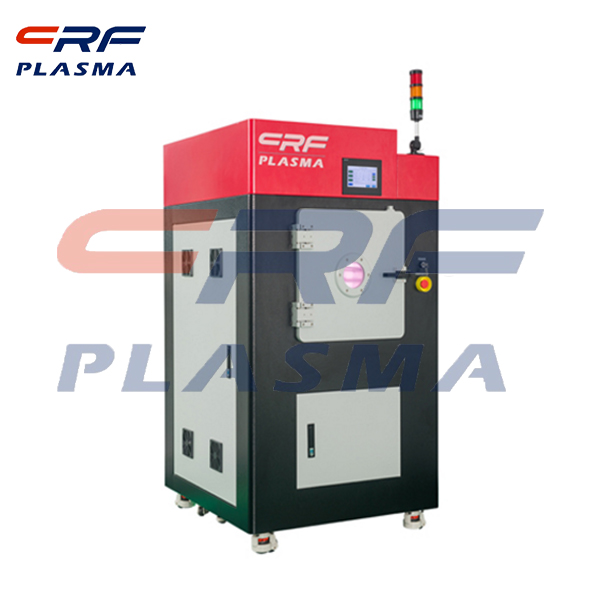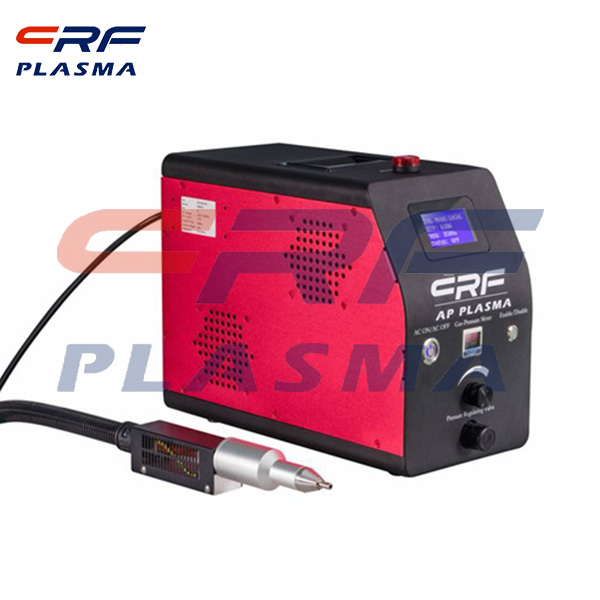
Welcome to Shenzhen Sing Fung Intelligent Manufacturing Co., Ltd.
E-mail:shaobo@sfi-crf.com
Vacuum plasma cleaning machine manufacturers on oxygen hydrogen plasma etching graphene introduction
- Categories:Technical Support
- Author:plasma cleaning machine-surface treatment equipment-CRF plasma machine-Sing Fung Intelligent Manufacturing
- Origin:
- Time of issue:2021-04-14
- Views:
(Summary description)
Vacuum plasma cleaning machine manufacturers on oxygen hydrogen plasma etching graphene introduction
(Summary description)
- Categories:Technical Support
- Author:plasma cleaning machine-surface treatment equipment-CRF plasma machine-Sing Fung Intelligent Manufacturing
- Origin:
- Time of issue:2021-04-14 10:38
- Views:
Vacuum plasma cleaning machine manufacturers on oxygen hydrogen plasma etching graphene introduction:
Both oxygen and hydrogen plasma can be used to etch graphene. The basic principle of these two kinds of gaseous plasma etching graphene is to etch along the crystalline face of graphene through chemical reaction. The difference is that oxygen plasma attacks carbon-carbon bonds and forms volatile gases such as carbon monoxide and carbon dioxide. And the hydrogen plasma is going to form methane gas and bond with carbon and hydrogen. In 2010, Institute of Physics, Chinese Academy of Sciences Guangyu Zhang published an article etching single-layer and double-layer graphene with hydrogen as the main gas. It is pointed out that the power of the RF frequency is a key parameter, and too much will easily etch the graphene into deep grooves and form a large number of defects. Stronger plasma etching will lead to wider gullies and deeper holes.

When the hydrogen plasma is too powerful or for too long, it will further attack the broken bonds on the graphene surface, making it wider and wider, forming deep ravines, and attacking the other parts of the graphene, forming deep hexagonal holes. In both cases, the specific processing process should be avoided. In addition to the precise control of RF power and etching time and other conditions, attention should also be paid to the protection of areas that do not need etching in etching. This is a serious problem because graphene is highly reactive and vulnerable to damage. Fortunately, many plasma etching equipment manufacturers have noticed the need for protection of non-etching areas or specific functional layers in the etching process. Many manufacturers have launched or are about to launch such models to adapt to the etching needs of nodes below 14nm.
Etching temperature is another important parameter, as is the current mainstream etching process. What is interesting is that the etching rate of graphite does not vary linearly with temperature, but has a peak at around 450°. What is more interesting is that the etching rate is different for different thickness of graphene, the etching rate of single or double graphene at different temperatures. We can see that single-layer graphene etches at a much faster rate than double-layer graphene. This is because the reduction of layers means the increase of exposed area, which means more carbon-carbon bonds are exposed. However, double-layer or multi-layer graphene always overlaps with each other, and the exposed lower layer may have the same crystal orientation after the upper carbon-carbon bond is broken, which increases the difficulty of etching, so the etching rate will be significantly different.
After many try and process optimization, has realized the 8 nm, 12 nm, 22 nm width of nanoscale line, graphene and preparation into the device, though not good electrical, current switch is only 102, threshold voltage and saturation current can't meet the requirements of chip level, but when it comes to the study of the processing method and etching detail is worth studying. In particular, the oxygen plasma is used for etching to form graphene lines of 120nm, and then the hydrogen plasma is used for etching to form even finer lines. On the one hand, oxygen graphene etching can be carried out at room temperature, with very low cost and considerable rate, and the accuracy to the level of several nanometers to tens of nanometers, without too fast etching rate, which makes hydrogen plasma has the possibility to be used.
Scan the QR code to read on your phone

TEL:0755-3367 3020 / 0755-3367 3019

E-mail:sales-sfi@sfi-crf.com

ADD:Mabao Industrial Zone, Huangpu, Baoan District, Shenzhen

















